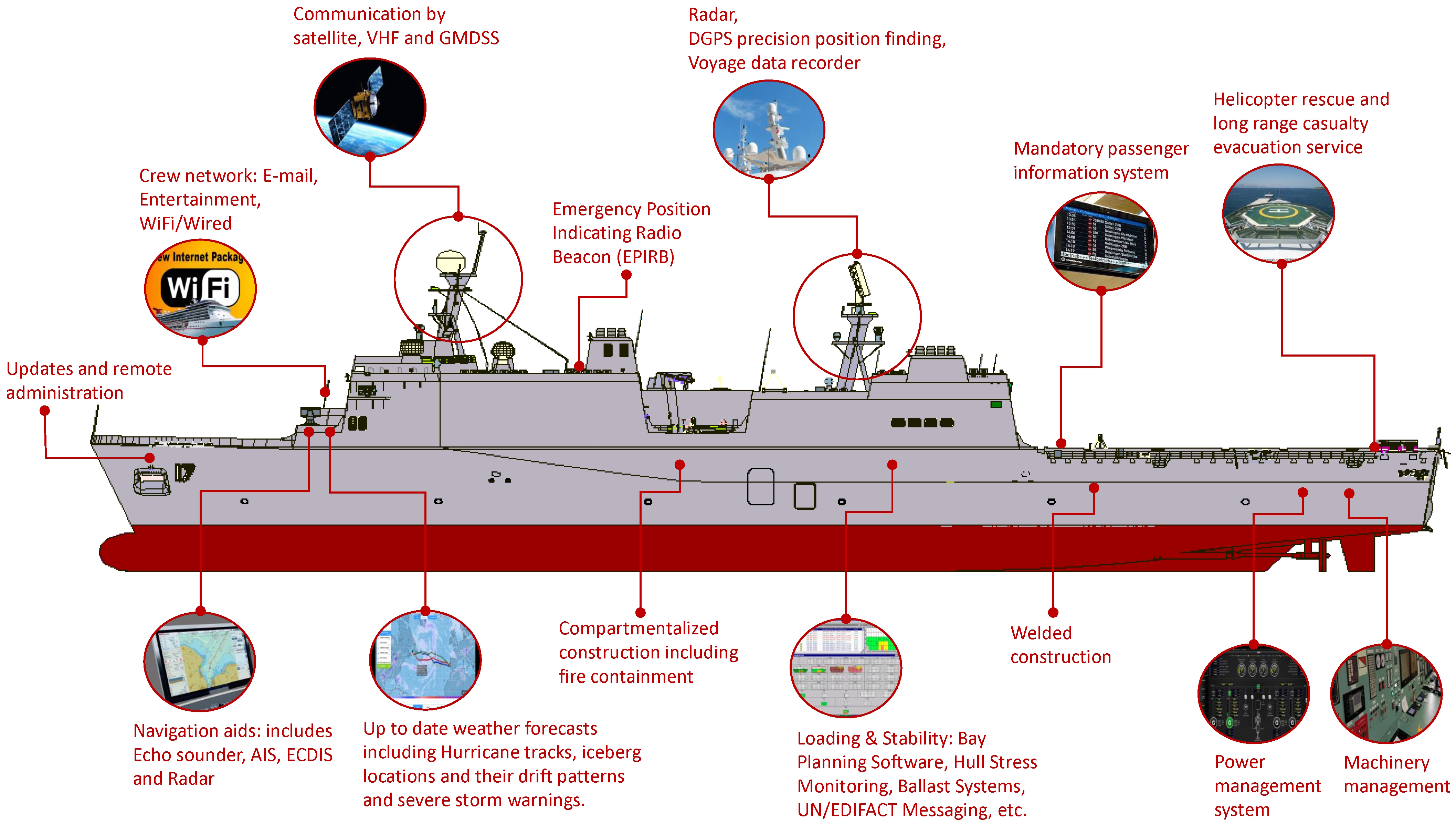
Addressing IoT Security Trends and Challenges in the Maritime Industry
The Internet of Things (IoT) has revolutionized how the maritime industry operates, bringing new levels of efficiency and convenience to ships, offshore drilling platforms, and port infrastructure. IoT devices are used for a variety of purposes such as navigation, cargo management, and operational control systems. However, with the increasing use of connected devices comes the risk of cyber-attacks, data breaches, and other security threats. Ensuring the security of these devices is crucial to prevent the disruption of maritime operations and to protect sensitive information such as shipping routes, cargo details, and critical infrastructure information. IoT cybersecurity in marine is therefore a critical concern for organizations in the maritime industry, as well as for the global economy.
To achieve IoT cybersecurity in marine, organizations can implement a range of security measures, such as encryption, firewalls, secure software updates, and strict access controls. In addition, organizations can adopt international cybersecurity standards and guidelines, such as ISO/IEC 27001, IEC 62443, the NIST Cybersecurity Framework, and the BIMCO/ICS Cyber Security Guidance for Shipowners and Ship Managers, to ensure a consistent and effective approach to securing IoT devices.
“The maritime sector, which until now was considered safe due to the lack of Internet connectivity, is showing a 900% increase in cybersecurity breaches on operational technology as it enters the digital era.”

Use of Internet of Things onboard a vessel. CLICK HERE to expand image.
The Importance of IoT Cybersecurity in Marine
The maritime industry relies on a wide range of IoT devices for a variety of purposes, including navigation, cargo management, and operational control systems. Ensuring the security of these devices is crucial to prevent the disruption of maritime operations and to protect sensitive information such as shipping routes, cargo details, and critical infrastructure information. Cyber-attacks on IoT devices in the marine industry can have serious consequences, including financial losses, reputation damage, and even loss of life.
- 1. Protect Sensitive Information: The maritime industry relies on a wide range of IoT devices for various purposes, including navigation, cargo management, and operational control systems. Ensuring the security of these devices is crucial to prevent unauthorized access to sensitive information such as shipping routes, cargo details, and critical infrastructure information.
- 2. Prevent Disruptions: Cyber-attacks on IoT devices in the marine industry can result in the disruption of maritime operations and negatively impact the global economy.
- 3. Financial Losses: Cyber-attacks can result in significant financial losses for organizations in the maritime industry, as well as for individuals whose personal and financial information is compromised.
- 4. Reputation Damage: A data breach or cyber-attack can result in damage to an organization's reputation, affecting its ability to attract customers, partners, and investors.
- 5. Loss of Life: In extreme cases, cyber-attacks on IoT devices in the maritime industry can result in loss of life, particularly if they impact navigation or safety systems.
Security Measures for IoT in Marine
To achieve IoT cybersecurity in the marine industry, organizations can implement a range of security measures. These include:
- • Encryption: Ensuring that all data transmitted between IoT devices is encrypted can prevent unauthorized access to sensitive information.
- • Firewalls: Installing firewalls on ships, offshore drilling platforms, and port infrastructure can help to prevent cyber-attacks and unauthorized access to critical systems.
- • Secure Software Updates: Regularly updating the software on IoT devices can help to address security vulnerabilities and protect against potential attacks.
- • Strict Access Controls: Implementing strict access controls, such as password policies and two-factor authentication, can help to prevent unauthorized access to IoT devices.
- • Security Audits and Penetration Testing: Regular security audits and penetration testing can help organizations to identify vulnerabilities and ensure the protection of their systems.
International Standards and Guidelines
The development of international cybersecurity standards and guidelines for the marine industry can help to ensure a consistent and effective approach to securing IoT devices in the maritime domain. Organizations can adopt these standards to help mitigate risks and improve their overall security posture. Some examples of international standards and guidelines for IoT cybersecurity in marine include:
- • ISO/IEC 27001: This standard provides a framework for information security management and covers the implementation of security controls and management practices.
- • IEC 62443: This standard provides guidelines for industrial control system (ICS) security and covers security management, network security, system security, and application security.
- • NIST Cybersecurity Framework: This framework provides guidelines for improving an organization's cybersecurity posture and can be adapted to meet the specific needs of the maritime industry.
- • BIMCO/ICS Cyber Security Guidance for Shipowners and Ship Managers: This guidance provides recommendations for ship owners and managers on how to implement cybersecurity measures on ships and in port.
Conclusion
IoT cybersecurity in marine is a critical concern for the maritime industry, as well as for the global economy. By implementing a range of security measures, such as encryption, firewalls, secure software updates, and strict access controls, organizations in the maritime industry can help to protect themselves against potential cyber-attacks and data breaches. The development of international cybersecurity standards and guidelines can also help to ensure a consistent and effective approach to securing IoT devices in the maritime domain.
About the Author
Ruben George
